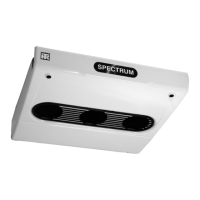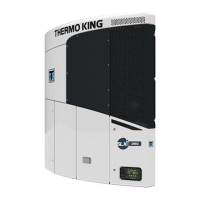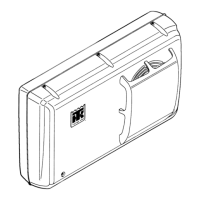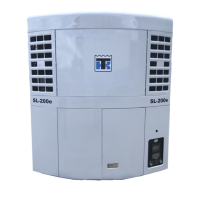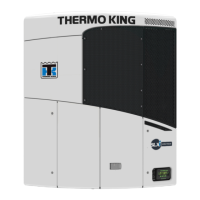Electronic Controls
75
TG-V Module Bench Test
1. Place the main On/Off switch in the Off
position.
2. Disconnect all of the wires from the
thermostat module.
3. Connect a known good sensor (yellow
jacketed) to the terminals labelled SN on the
rear of the thermostat module.
4. To obtain accurate voltage readings during the
thermostat module checkout, circuits 10T and
14T must be tested under normal load. This is
provided by connecting two Bosch relays
(Part No. 44-5847) as follows:
Connect pin 86 of two relays to the negative
(-) terminal of a 12 Vdc power source.
Connect pin 85 of one relay to the 10T
terminal to simulate the speed relay. Connect
pin 85 of the second relay to the 14T terminal
to simulate the heat relay.
5. Place the sensor bulb in a 32 F (0 C) ice bath.
6. Connect the positive (+) 12 Vdc power source
on the 8 terminal. Connect the negative (-)
power source to the CH terminal.
7. Check for voltage between 8 and CH. Make
sure approximately 12 volts is present.
NOTE: Due to the accuracy of the TG-V
module, the digital readout may read a few
tenths of a degree higher than 32 F (0 C).
8. Set the thermostat module setpoint to 24 F
(4.4 C). The thermostat is now in high speed
cool.
a. Check for voltage between terminals 10T
and CH. 12 volts should be present. The
speed relay should be energized.
b. Check for voltage between terminals 14T
and CH. Zero volts should be present. The
heat relay should be de-energized.
9. Set the thermostat module setpoint to 29 F
(-1.7 C). The thermostat is now in low speed
cool.
a. Check for voltage between terminal 10T
and CH. Zero volts should be present. The
speed relay should be de-energized.
b. Check for voltage between terminals 14T
and CH. Zero volts should be present. The
heat relay should be de-energized.
10. Set thermostat module setpoint to 33 F
(0.6 C). The thermostat is now in low speed
heat.
a. Check for voltage between terminals 10T
and CH. Zero volts should be present. The
speed relay should be de-energized.
b. Check for voltage between terminals 14T
and CH. 12 volts should be present. The
heat relay should be energized.
11. Set the thermostat module setpoint to 36 F
(2.2 C). The thermostat is now in high speed
heat.
a. Check for voltage between terminals 10T
and CH. 12 volts should be present. The
speed relay should be energized.
b. Check for voltage between terminals 14T
and CH. 12 volts should be present. The
heat relay should be energized.
12. Turn Off the power to the thermostat module.
13. Place a jumper wire from the 8 terminal on
thermostat module to the 7K terminal on the
thermostat module.
14. Turn On the power to the thermostat module.
15. Set thermostat module setpoint to 33 F
(0.6 C). The thermostat module should now be
in low speed heat. (12 volts present on
terminal 14T, zero volts present on terminal
10T). Leaving the jumper from the 8 terminal
to the 7K terminal in place, set the thermostat
module setpoint to 36 F (2.2 C).
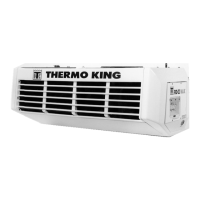
